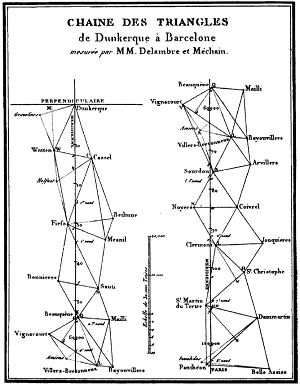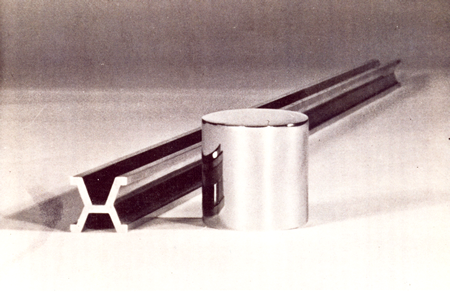
CREATION OF THE DECIMAL METRIC SYSTEM
At the end of the 18th century, the measurement systems used in Europe were characterized by great diversity. Despite the reforms and attempts at standardization that took place in several countries, the reality of metrology continued to be based on the coexistence of immense measurement systems and countless units and measures with the same name, worth different values, depending on the location.
In France, at the beginning of the last quarter of the 18th century, the standard of the length was the Toise of Châtelet (it was fixed outside the Grand Châtelet in Paris). It was based on this standard that 2 toises used to measure the meridian arcs were manufactured: one in Peru (Toise of Peru) and another in Lapland (north Toise).
For weight, the Charlemagne pile, manufactured in the late 15th century, was still used.
In 1766, as the Toise of Châtelet was being tampered with, Luis XV approved the proposal to adopt the Toise of Peru as a prototype standard and ordered the Académie des Sciences (French Academy of Sciences) to manufacture 80 copies to distribute to the procureurs généraux au Parlement (Parliament’s General Attorneys). It was this standard, which became known as Toise de l’Académie (Toise of the Academy), which came to be used to define the provisional meter in 1795 and the definitive meter in 1799.
With the French Revolution, studies were renewed to find a simpler and more rational system.
In March 1790, Talleyrand proposed the creation of a new stable, uniform and simple measurement system, based on the length of the seconds pendulum at a latitude of 45°
Two months later, in May 1790, the Assemblée Nationale Constituante (National Constituent Assembly) adopted the principle of uniformity of weights and measures, based, precisely, on the length of the seconds pendulum.

In March 1791, the National Constituent Assembly decreed that, in order to achieve a natural and invariable unit of measurement, the magnitude of the terrestrial meridian quarter should be adapted to the base of the new measurement system, which should be decimal. For this purpose, the necessary operations would be carried out, namely the measurement of a meridian arc, by triangulation, between Dunkirk and Barcelona.
Although the war with Spain interrupted the measurements, in 1793 the mètre, for the length, the are, for the area, the grave (afterwards gramme), for the weight, the pinte (afterwards cadil, and in 1795 liter) for the volume and the franc (equal to 1 centigrave of silver) for the currency, were approved by decree.
In 1795, the Decimal Metric System was approved, with a standard of weights and measures for the entire Republic: the platinum meter, which would be the fundamental unit of the entire system of measures.
After the measurements of the meridian arc carried out by Méchain and Delambre, in 1796-97, the definitive meter was established (“the length of 3 feet 11.996 lines of the Toise of the Academy”), from which the liter and kilogram were defined.
On December 10, 1799, the final values of the mètre and the kilogramme, executed in platinum, were approved.
